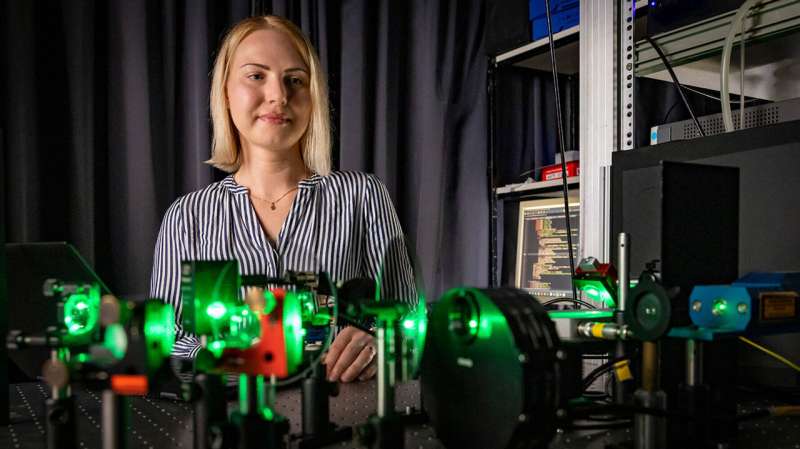This article has been reviewed according to Science X's editorial process and policies. Editors have highlighted the following attributes while ensuring the content's credibility:
fact-checked
peer-reviewed publication
proofread
Breakthrough in understanding charge transport in organic solar cells

Researchers from the Professorship of Optics and Photonics of Condensed Matter, headed by Prof. Dr. Carsten Deibel, of Chemnitz University of Technology and other partner institutions are currently working together on solar cells made of novel organic semiconductors, which can be manufactured using established printing or thermal evaporation methods.
In order to fundamentally understand and further develop this class of photovoltaic materials, the researchers are pursuing a strongly interdisciplinary approach as part of the research unit "Printed & Stable Organic Photovoltaics from Non-fullerene Acceptors—POPULAR." Here, expertise from chemistry and materials science, as well as physics and mathematics, is combined with printing technology.
"With regard to the development of resource-efficient renewable energies, research on organic photovoltaics is extremely relevant, as they can be processed at high throughput at room temperature," says Deibel, who is also the head of the research group POPULAR.
"Organic semiconductors are very good light absorbers, so the light-absorbing layer in solar cells is 1,000 times thinner than in crystalline silicon solar cells," says the Chemnitz physics professor. In contrast to the latter, organic solar cells are not highly ordered, but disordered. "For the transport of the electrons and holes generated in organic semiconductors by sunlight, this means they do not move on a highway, but on a bumpy road with many traps that catch electrons or holes and lead to a slower, but not lower, current flow," explains Deibel. One way to describe this energetic landscape is the density of states.
Surprising insight: Power law describes the density of states of organic solar cells
To better understand charge transport in organic solar cells, Deibel and his research assistant Maria Saladina, together with colleagues from the University of Nuremberg-Erlangen, the Helmholtz Institute Erlangen-Nuremberg for Renewable Energy, and Heliatek GmbH in Dresden, manufactured different types of organic solar cells, analyzed them and for the first time uncovered the electronic defect landscape. This is the result of sensitive measurements of the open-circuit voltage of the organic solar cells—the voltage that is generated when no current is flowing, and which is a measure of how much energy the photo-generated electrons and holes have.
The measurements were made under a wide range of light intensities and temperatures. The evaluation of the data showed that the density of states of the organic solar cells has a shape that cannot be described—as previously assumed—by a Gaussian or exponential distribution, but by a power law. "This means that, contrary to older models, smaller open-circuit voltages in the solar cells lie in an energetic range where there are more traps. Fortunately, under working conditions of organic solar cells at room temperature under sunlight irradiation, the open-circuit voltage is higher and the density of states contains fewer traps," says Saladina.
The research results were published in Physical Review Letters and the manuscript was selected as an Editors' Suggestion. Although the theoretical description of organic solar cells must be reconsidered due to these new insights, the authors of the technical article estimate that there is no fundamental obstacle to the production of highly efficient organic solar cells using printing or evaporation technologies.
"We are convinced that the disordered nature of organic semiconductors for solar cells is directly linked to the mass-production-compatible manufacturing possibilities," says Deibel.
Saladina adds, "We have realized that the density of states, which determines the processes of charge transport and recombination in organic solar cells, is more complex than previously assumed." The challenges associated with this will also be faced by the DFG research unit POPULAR and the Marie-Skłodowska-Curie Ph.D. network EIFFEL.
More information: Maria Saladina et al, Power-Law Density of States in Organic Solar Cells Revealed by the Open-Circuit Voltage Dependence of the Ideality Factor, Physical Review Letters (2023). DOI: 10.1103/PhysRevLett.130.236403
Journal information: Physical Review Letters
Provided by Technische Universität Chemnitz




















